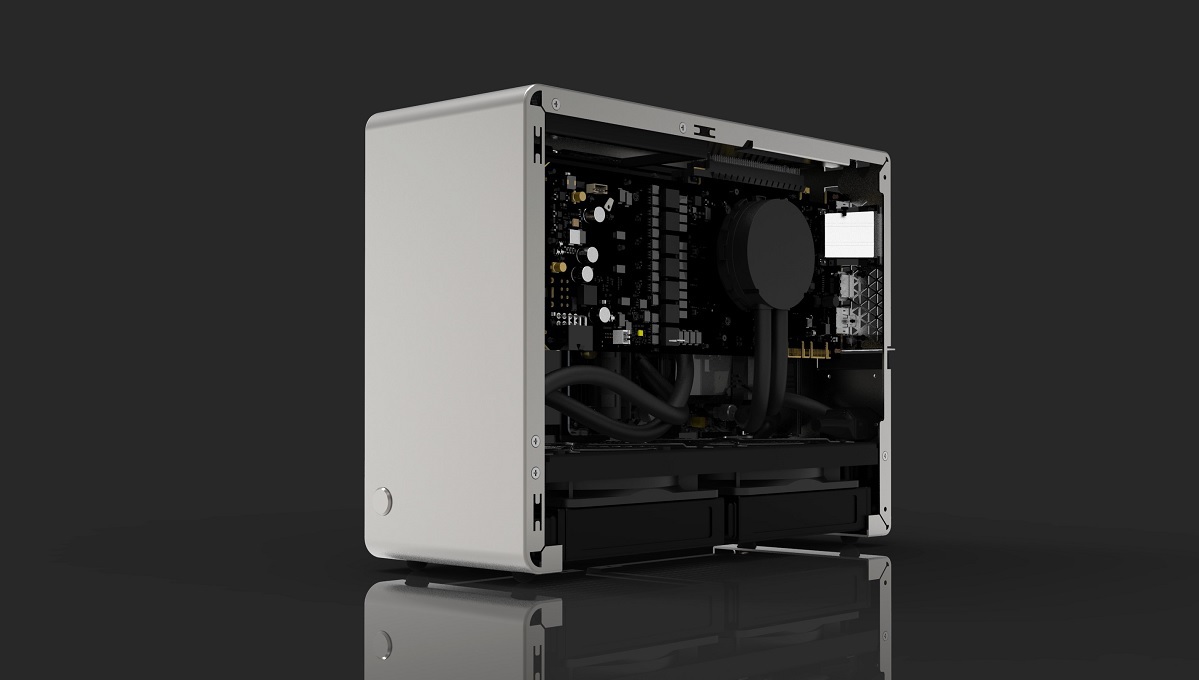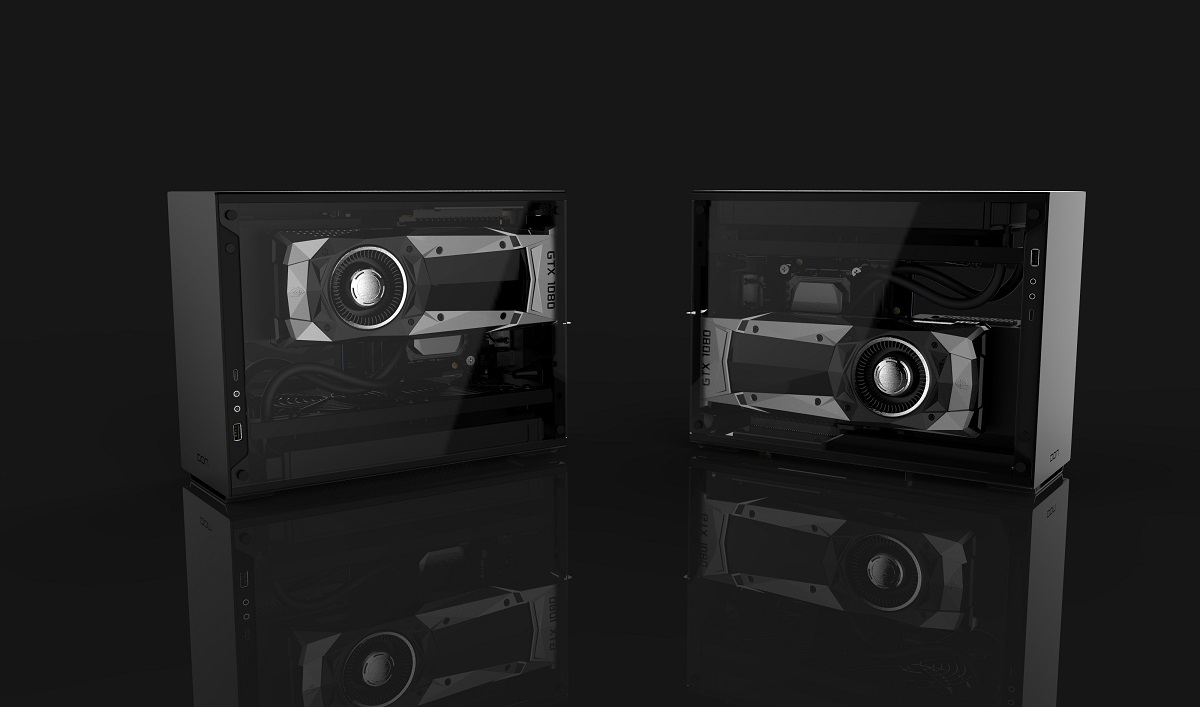Today I made a short rendering with I/O on top because I still like this design. I think it looks more elegant without the cutouts on the sides. For this test I used only USB3.0 type A and USB3.1 type C on the topside. I know we already had the discussion, but what do you think?
View attachment 61916
Click for 4K
My view is that the top I/O solves two problems;
1. Additional cost of machining the cut out. That might not matter for the average Dancase customer who clearly supports innovation and good looks above cost.
2. Fingerprints from stray fingers as you grope around trying to make your USB device plug in for the third attempt. That's much more of an issue for the aesthetically driven dancase customer!
I like side I/O much more but then I don't want to be polishing and cleaning fingerprints every other day.
One more quick point on filters, If this case is intending to draw air in from the bottom then it's going to pull in a lot of dust from that direction so proper filtering is essential. If it's exhausting through the bottom then the same point for the top. I just opened up an old Silverstone PC which has not been opened for three years and it's as clean as a whistle because all air was input through filters. IMO it's essential.
![[H]ard|Forum](/styles/hardforum/xenforo/logo_dark.png)


